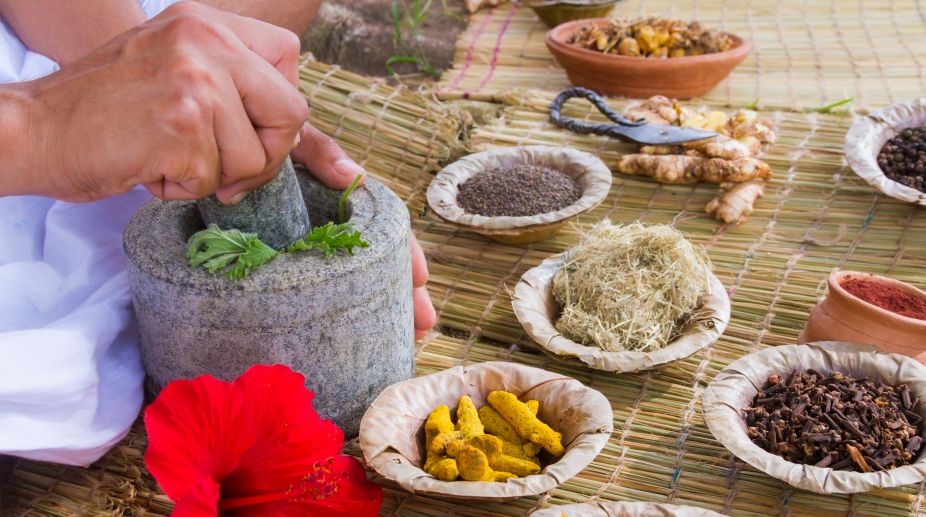Is India set to become the new beauty destination for global brands?
The Indian beauty market is estimated to reach $2.27 billion by 2028, with a CAGR of 10.91% during the forecast period (2023-2028).

PHOTO: Getty Images
Over the years, there has been a rapid spurt in the incidence of attacks on doctors and para-medical staff, and vandalising of hospitals destroying costly medical equipment.
The basic causes of public wrath have been essentially: first, negligence on the part of doctors and support staff to render proper treatment and secondly, anomalies in hospital bills involving over billing and false billing.
There have been widespread allegations that patients have to incur huge expenses even on items not necessary for treatment. This author while recuperating from kidney transplant surgery in a hospital on the E M Bypass in East Kolkata had to settle pay for feeding bottles for babies, bibs etc. Therefore, apparently people's wrath is rather legitimate.
Advertisement
Next comes the allegation about negligence in treatment. There are many genuine instances to support this allegation. But there also remains a pertinent question whether there is too much load on a physician.
In order to consider both these worrying issues – the escalating cost of treating a patient in a private hospital and the attitude of a section of physicians, the Government of West Bengal had decided to discuss threadbare how the menace could be handled. However, many leading doctors keep close touch with many influential people, and they somehow manage to pull strings compelling common people to remain deprived of the best.
In India, charity as a rule doesn't begin from home. Even the venerated Professor Bidhan Chandra Roy had many friends who were legendary physicians known to be in the habit of toying with established rules and regulations. During the 34 years of Left Front rule in West Bengal, no doctor of repute could be removed from plum postings in Kolkata and the surrounding. Some of them also owned private hospitals and nursing homes that were beyond the reach of most patients.
In a new township like Salt Lake, there had been several examples of private hospitals being established on land purchased at subsided rates with a promise to render low cost medical care to common people. But in practice the promise had seldom been kept.
In a study done several years ago, it was revealed that a sizable section of the population could become paupers largely as a result of steep hike in the price of health care. This has emerged as a critical problem in the modern healthcare system, especially the allopathic system.
India was the biggest British colony and the advent of the Raj saw the growth of allopathy at the expense of Traditional and Alternative Medicine (TAM) much to the detriment of the common man.
Even in the post colonial phase, the health policy of India introduced by Jawaharlal Nehru and leading physicians like Dr. Roy – all trained in Britain – did repose firm faith on allopathy while setting aside the claims of Traditional and Alternative Medicine. But TAM had been sincerely pursued in many countries of Asia, Africa and South America.
Even in some states within India such as Kerala, Tamil Nadu and Andhra Pradesh, the practice of TAM is exemplary and many patients even today visit these states to cure chronic ailments like cancer, blood pressure, asthma, diabetes, skin diseases etc.
But physicians associated with the Indian Medical Association (IMA), the biggest organisation of allopaths has fought tooth and nail against the introduction of TAM.
How can the health care system be made affordable to common people? Physicians need to be more socially committed to prescribe medicine and tests keeping in mind the pecuniary ability of a patient. But this is seldom done by a modern medical practitioner who seems to be more concerned about his personal wealth instead of patients' health. Ayurveda, yoga, unani, siddha, naturopathy and homeopathy – AYUSH – has since 2014 been placed under a separate Union Ministry. With its proper introduction and application, AYUSH may be able to allay problems of many sick patients. But fearing monetary loss, the allopaths have not allowed AYUSH to spread. This is, no doubt, an effective example of how modernity has harmed commoners.
India has 15 agro-climatic zones, 47,000 plant species and 15,000 medicinal plants that include 7,000 plants used in Ayurveda, 700 in Unani medicine, 600 in Siddha medicine and 30 in modern medicine. This makes India one among 12 mega bio diverse countries of the world.
The Indian systems of medicine have identified 1,500 medicinal plants of which 500 species are mostly used in preparation of drugs. Many consumers use traditional medicine for self care because of a wide perception that natural means safe. Because of limited quality control and or improper use by consumers, misuse of herbal preparations has been widely reported.
While traditional medicine has long been used, there is negligible documented evidence regarding its safety and effectiveness.
To tackle urgent and emergency cases, there is no substitute to allopathy. AYUSH can seldom render this service. But not all those who get admitted to hospitals and nursing homes are those needing critical care. Many of them are also not rich. Still, there is no referral system to goad patients suffering from chronic ailments to seek alternate cures. The problem lies in our profit-driven approach and this will impede our reaching the avowed goal of Health for All by 2020.
Our mindset needs to be cured in order to cure our body. AYUSH can be an effective substitute for many patients. The health care system must see a more effective distribution of resources.
The writer was on the sociology faculty of Presidency University.
Advertisement